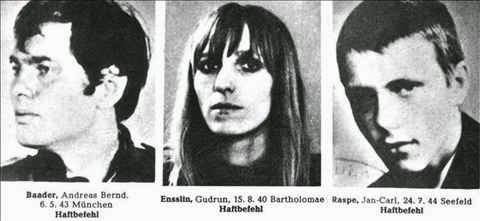June 8th, 2014.
Killesberg is the name of the park where Gregor Gog organized the Congress of Vagabunds in 1929. We made a walk towards Killesberg with the guide of Ivonne P. Doderer. It was one of the most interesting experiences during our time in Stuttgart. She was very precise with the stations of the route.
She makes evident how important is to create our own maps.
We began in the Theater Rampe and she made a historical approach to the city of Stuttgart.
It was very important for us that the map was connected since the beginning with history and memory.
She also makes a first reference about the special dimension of the city, absolutely engaged with car industry: Mercedes Benz, Daimmler, Porsche and Bosch factories are here. She made a reference about the clima changes because of this activity, specially about the "industrial snow", an artificial snow that falls in winter.
Ivonne talked about the urban planning and about Stuttgart 21, the social and cultural resistence against a big transformation of the main train station of the city. More info about this, soon.

Das Gerber, a new investment in Stuttgart. How many shopping malls more we need?
Close to the space of the investors is "time of cannibals"...
Tasya Krugovykh needs a rest, in front of Württembergisher Kunstverein Stuttgart, a contemporary art space. We met there our friends Iris Dressler and Hans D. Christ, Directors of this space. It was a pleasure to meet them and to have conversations with them during our time in the city.
In 1984, the sculptor Olaf Metzel made the piece Stammheim, a concrete wreath and the word Stammheim on the wall of the Kunstverein. This word -"a code word for terrorist militancy and police state armament"- was partially overpainted by unknown people. In referencing Stuttgart maximum-security prison, the artist was thematizing the trials againts members of RAF - Red Army Faction. In 2001, based on the initiative of the Ministry of Finance of Baden Wuttermberg, the sculpture was to be torn down. Only an extensive wave of protests was able to stop the demolitions plans.
For us was very important that the walk includes a reference about RAF, about rebellion and political violence during the 70`. During the conversations in the Vagabundkongress it was clear that is an experience of the german contemporary history that became tabú. There was not so much curiousity to talk about this. Again, a surprise about the relation that the current kongress with german activism history.
Andreas Baader, Gudrun Ensslin and Jan Carl Raspe, prisoners in Stammheim.
On October 27, 1977 was their funeral in Dornhalden Friedhof, Stuttgart.
Then, we decided to go by walk to Dornhalden Friedhof. We were there on June 12.
Dornhaldenfriedhof Entrance.
To erase the traces of RAF's history was (is until today) one of the main objectives of official german memory. Nobody must remember them. The map of the cemetery didn´t give any answer about the position of the graves of Baader, Ensslin and Raspe. Then, we decided to follow our intuition: we went left and closer to the borders of the cemetery. We were sure that the margin was the "normal" spatial position that hegemonical capitalism reserves for these subjectivities. But we didn´t find the place.
One young boy came walking. We decided to ask him about the grave. He was very friendly with us when we said that we came from Argentina, we were part of the Vagabungkongress in Theater Rampe, and we were making a research connecting social and political violence during the 70' in our country and in Germany. He pointed the place and... it was exactly in front of our last position!!!
It was really hot under the sun but we stayed there for two hours, sharing the energy of the powers that still survive in the rememberings of the social, political and cultural fights against oppression.
What kind of subjectivity is a vagabond?
How can we define the motion of vagrancy?
What kind of movements must we develope when the violence of finnancial capitalism
erase our ground, our basement and create a permanent condition of free fall?
Close to the bus stop, I founded this material, trace of a game that contemporary kids use. It seems that violence becomes terrorism when kills persons engaged with capital infraestructure but violence is totally okey if it's part of the virtual entairtenment education of contemporary children, the future "robot commanders".
Why nobody wanted to talk about RAF in the Vagabundkongress?
Photos: DocAC/2014


























